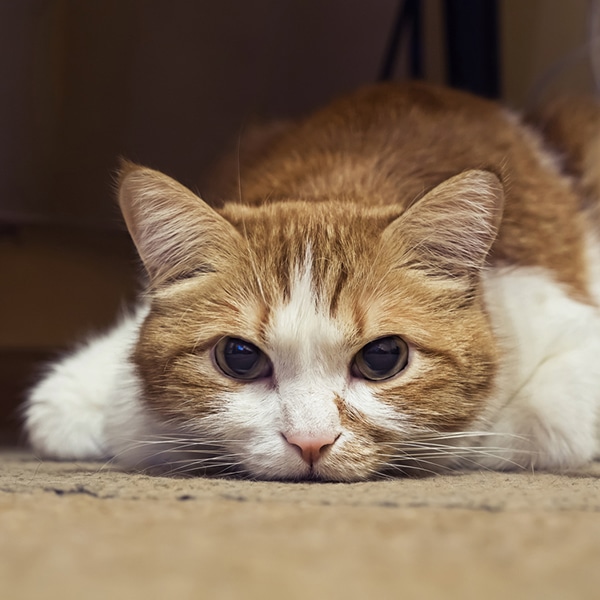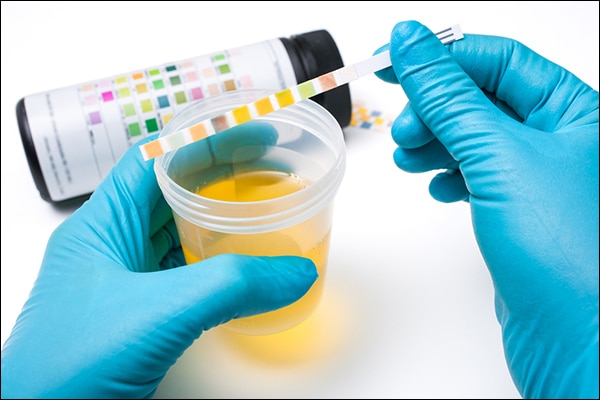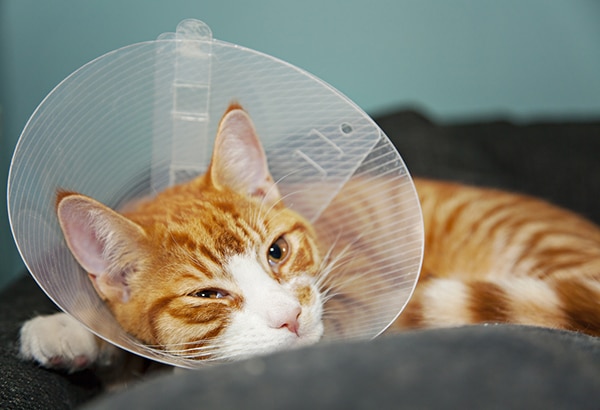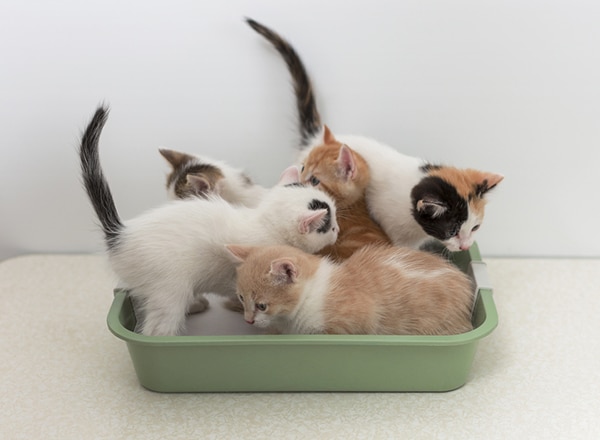So, your cat just peed all over the carpet. You may think she’s being naughty or trying to tell you that she’s “pissed off” about something, but you’d be wrong. The odds are good that the reason she did it is because she’s suffering from feline lower urinary tract disorder, or FLUTD. But what is FLUTD, and what can you do about it?

1. FLUTD is a term that describes several problems
Urinary tract symptoms could result from crystals or stones, a urinary tract infection, trauma, a tumor, a congenital abnormality, an obstruction, or idiopathic cystitis. There’s no way to know why a cat is having urinary symptoms without a visit to the vet.
2. The most frustrating of these problems is feline idiopathic cystitis
“Idiopathic” means the cause of the problem is unknown. Urinalysis may not reveal any infection or stones, but the cat is clearly suffering. Some vets believe stress is a trigger for FIC episodes, so it’s important to minimize the stress experienced by a FLUTD-prone cat.

3. Some of the symptoms can be hard to associate with FLUTD
Most of us know to look for symptoms like running back and forth to the litter box, genital licking, blood in the urine, and straining to urinate. However, cats with urinary issues can engage in inappropriate urination — peeing over drains is fairly common, presumably because the cool air coming from the drain may be comforting — “barbering” of the fur on the lower abdomen, and even incontinence.
4. If you do no other diagnostic tests, at least have the vet do a urinalysis
The only way you and your vet can know for sure if your cat has a urinary tract infection or a different problem is by examining a urine sample. Just by looking at your cat’s urine to see if it’s cloudy or has blood and mucus in it, your vet will be able to tell a lot. If your vet does find bacteria in your cat’s urine, she may recommend a culture and sensitivity test to find out which antibiotics will kill the bacteria, something important to know because many bacteria are becoming antibiotic-resistant.
[[{“type”:”media”,”view_mode”:”media_preview”,”fid”:”90192″,”attributes”:{“alt”:”600-cathetercat.jpg”,”class”:”media-image”,”height”:”180″,”style”:”display: block; margin-left: auto; margin-right: auto;”,”width”:”180″}}]]
This cat has crystals and stones blocking his bladder, so he’s being catheterized to get the urine out and flush the bladder to get rid of any other stones and crystals. Urolithiasis by Shutterstock
5. Most young cats don’t actually have infections
Vets may prescribe antibiotics for a cat with FLUTD, but research has revealed that the vast majority of young-adult to middle-age cats do not actually have bacteria in their urine.
6. On the other hand, most old cats do have infections
Senior and geriatric cats are much more prone to infections. Illnesses like diabetes and kidney disease cause the urine to be more watery than usual, which means its natural germ-fighting qualities don’t work as well. Bacteria that travel from the outside of the body up the urethra and into the bladder have a nice, warm place to reproduce like crazy.

7. FLUTD episodes warrant a same-day vet visit
Urinary tract problems can become very serious, very quickly, especially in male cats. Males have longer, narrower urethras than females and as a result could experience a potentially fatal complete blockage. If a male cat is having urinary symptoms, take him to the vet right away, even if that means a midnight trip to the emergency clinic.
8. Prevention is the best cure
Keep the risk of urinary tract problems low by providing plenty of fresh, clean filtered water. Since cats have a very low thirst drive, add some canned food to your cat’s diet. Litter boxes should be cleaned regularly in order to stop bacteria from building up and to prevent the cat from avoiding the box because it’s dirty. I also recommend having multiple litter boxes in different rooms so that cat territory conflicts don’t cause stress.

Has your cat had urinary tract problems? What was the diagnosis, and what did you and your vet do to help your cat get better and stay better? Share your stories in the comments.
Read more on FLUTD and related issues:
The Five Most Common Feline Physical Ailments
- Ask a Vet: How Can I Prevent Bladder Problems in My Cat?
- All About Feline Urological Syndrome
- Is Diet Linked to Feline Urinary Obstruction?
- 9 Things You Should Know About Feline Urinary Tract Blockages
- Do Prescription Cat Food Diets Really Work?
- The 5 Stages of Feline Urinary Tract Blockage
- Peeing Outside the Litter Box: When Your Cat Needs the Vet
- That Time I Stayed Up All Night Watching My Cat’s Litter Box
- Ask a Vet: Why Do Cats Urinate Outside of the Litter Box?
About JaneA Kelley: Punk-rock cat mom, science nerd, animal rescue volunteer and all-around geek with a passion for bad puns, intelligent conversation, and role-play adventure games. She gratefully and gracefully accepts her status as chief cat slave for her family of feline bloggers, who have been writing their award-winning cat advice blog, Paws and Effect, since 2003.







